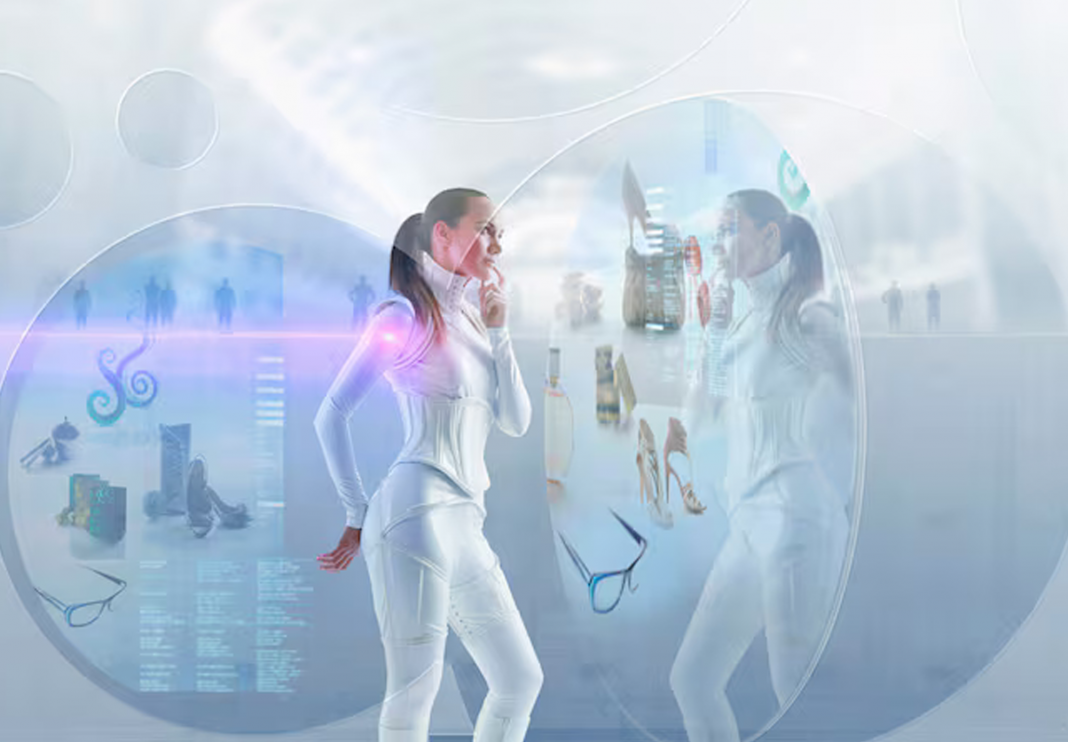As the global beauty market embraces its next evolution, artificial intelligence (AI) and augmented reality (AR) are becoming more than just buzzwords—they’re the backbone of a digital beauty revolution. According to Arbelle, a leading AI beauty platform, the market is poised to more than double in value from $2.68 billion in 2022 to $6.8 billion by 2027. At the heart of this transformation is a new era of customer experience—hyper-personalized, data-driven, and seamlessly integrated across both digital and physical spaces.
AI Beauty Assistants Are Your New Personal Glam Squad
Imagine walking into your favorite beauty retailer and being greeted by a virtual assistant who knows your skin type, makeup preferences, and even your sensitivity to ingredients. According to Chang, this level of personalization is no longer a far-off fantasy.
“AI-powered chatbots and virtual advisors will guide consumers through product selections tailored not only to general preferences but to specific skin conditions and goals,” she explains. These assistants will be available 24/7 and capable of tackling even the most complex beauty queries—from matching foundation to undertones to creating customized skincare routines.
AI’s role won’t stop at the point of purchase. “Behind the scenes, it will transform product development itself,” Chang adds. “From analyzing consumer feedback to simulating product performance across diverse skin types, AI will allow brands to innovate faster and more effectively.”
Custom-Built AI: Beauty’s Competitive Edge
While general-purpose AI like ChatGPT has made waves, proprietary AI trained specifically for beauty is where real transformation happens. “Proprietary models can be fine-tuned to understand the intricacies of cosmetic formulas, skincare routines, and consumer behaviors,” says Chang.
Perfect Corp.’s MakeupGPT and SkincareGPT are leading examples, offering real-time, personalized recommendations that go far beyond generic advice. But building such models isn’t without its hurdles. “They require high-quality, diverse data sets, which means working with dermatologists, influencers, and even academic researchers to ensure representation and accuracy,” she explains.
Cost is another challenge. Developing proprietary AI involves investments in top-tier data scientists, software infrastructure, and cloud computing. For smaller beauty brands, Chang suggests starting small: “Leverage prebuilt AI platforms like PerfectGPT that offer customization without the need for a full-scale build from scratch.”
Tackling “De-Influencing” with Authentic AI
In a world increasingly skeptical of social media endorsements, the “de-influencing” trend has shifted consumer trust away from paid promotions and toward authenticity. According to Chang, AI provides a powerful answer.
“Consumers want to find products that genuinely meet their needs—not just what’s trending,” she notes. AI can provide that clarity, offering honest, data-driven recommendations based on individual profiles rather than mass appeal.
Beyond trust, AI also supports sustainability. “Virtual try-on technology reduces product waste by helping consumers test before they buy,” says Chang. Whether it’s a lipstick shade or a new foundation, trying before buying digitally can reduce returns and minimize environmental impact.
Creating Seamless Omnichannel Shopping Journeys
From online shops to flagship stores and social platforms, today’s beauty consumers want a seamless experience—and AI is the glue that holds it all together. With AR technology, customers can virtually test makeup, skincare, or even hair color from the comfort of their homes or while standing in front of an AR-powered mirror in-store.
“In physical locations, these tools can offer tailored product suggestions based on face shape, skin tone, and past purchases,” says Chang. Even social media is getting a tech upgrade: “Social commerce will continue to rise, with AI enabling purchases directly from platforms like Instagram, TikTok, and YouTube.” This integration is not only convenient but deeply personal, bringing brand experiences directly into consumers’ daily digital routines.
Reinventing Product Development
Gone are the days when brands waited months for consumer feedback before tweaking formulations. AI and AR now enable real-time, proactive innovation. “Consumer data helps brands anticipate preferences rather than just reacting to them,” explains Chang. “It’s not just about creating what’s popular—it’s about crafting what’s personally relevant.”
AR technology also streamlines the design process. “Product prototypes can be visualized and ‘tested’ in virtual environments, reducing the time and resources needed for physical samples,” she adds. This allows for faster iteration, improved alignment with market demand, and more agile go-to-market strategies.
The Path Forward: Personalization and Agility
So, what should beauty brands be doing right now to prepare for this AI-powered future? “My advice is to go all-in on data-driven personalization,” says Chang. “Understand your customers deeply—what they want, what they need, what they actually use. That’s where loyalty and long-term value are built.”
Being future-ready doesn’t mean rushing to implement every new technology. Instead, Chang emphasizes agility. “Stay flexible and stay connected. The brands that thrive will be those who continuously adapt to changing technologies while keeping the customer at the center of everything.”
As the beauty industry stands on the cusp of a technological transformation, AI and AR are not just enhancing the customer experience—they’re redefining it. From personalized shopping journeys and sustainable virtual try-ons to proactive product development and deeper consumer insight, the future of beauty is data-rich, highly customized, and deeply human at its core. Beauty in 2025 won’t just be about how you look—it will be about how well the industry understands you.



